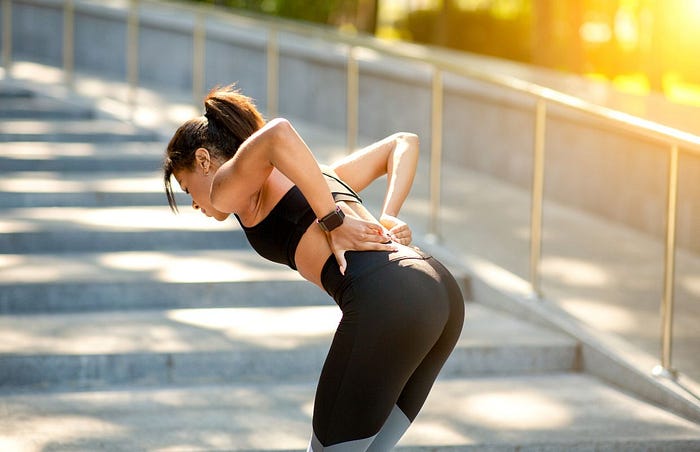Sciatica can be incredibly bothersome for those who experience it, leading many to seek relief from various methods and finally enjoy a more comfortable life free of discomfort. From unconventional approaches like those who turn to specialized diets, to more physically-oriented methods, such as those who search for sciatica nerve stretches at a stretch gym, there’s no shortage of options.
Here, we’ll cut through the confusion and present you with the most effective methods for managing sciatica discomfort and when they work best. Our aim is to provide practical insights to help you make informed decisions tailored to your unique situation.
Understanding the Fundamentals of Sciatica
At its core, sciatica is a medical condition stemming from the irritation or compression of the sciatic nerve, which originates in the lower back and extends down the legs. To understand sciatica better, it’s essential to recognize its primary causes, which may include herniated discs, spinal stenosis, or even muscle spasms.
How Sciatic Discomfort Typically Manifests
Sciatica typically manifests as a shooting, often sharp ache that radiates from the lower back through the buttocks and into the legs. This discomfort can vary in intensity, with some experiencing a dull ache while others suffer from debilitating discomfort. In addition to this, sciatica may also cause tingling, numbness, or weakness in the affected leg.
The Importance of Proper Diagnosis and Consultation with Healthcare Professionals
Given the diverse potential causes and presentations of sciatica, it is paramount to seek professional diagnosis and guidance. Healthcare professionals, such as orthopedic specialists or neurologists, can accurately diagnose the underlying issue and recommend appropriate treatment. Self-diagnosis and treatment are discouraged, as they may exacerbate the condition or lead to incorrect management.
Understanding the fundamentals of sciatica sets the stage for exploring the most effective methods to manage and alleviate its discomfort.

Effective Methods to Ease Sciatica Discomfort
Methods vary in effectiveness based on several factors, including the underlying cause of sciatica, the severity of the condition, and an individual’s unique physiology.
Some methods may excel in targeting specific issues, such as muscle-related sciatic discomfort, while others may be more suitable for addressing structural issues like herniated discs. Let’s explore these methods in-depth and provide guidance on when and how they work best for managing sciatica discomfort.
Hot and Cold Therapy
Hot and cold therapy are effective non-invasive techniques for alleviating sciatica discomfort. They involve applying temperature-based treatments, each with unique benefits. This is how they work:
- Heat Therapy: Using heat sources like heating pads or warm baths can soothe discomfort by improving blood flow, delivering essential nutrients for healing and relaxation. It’s particularly effective for chronic sciatica and muscle-related tension.
- Cold Therapy: Cold packs or ice provide quick relief by numbing the area and reducing inflammation, preventing further muscle spasms. It’s most beneficial for acute sciatic discomfort, especially within the first 48 hours.
Stretching Exercises
Sciatica nerve stretches are a great solution for sciatica relief, offering a non-invasive and natural approach to alleviate discomfort and promote healing.
Stretching exercises are effective for several reasons:
- Improving Flexibility: This increased flexibility can alleviate sciatica by reducing muscle tightness and stiffness in these areas, ultimately relieving pressure on the sciatic nerve.
- Reducing Muscle Tension: Targets muscle groups in the lower back, buttocks, and legs, releasing tension and reducing spasms.
Incorporating stretching exercises into your routine is best as a preventive measure or for managing mild to moderate sciatica. However, exercise caution with self-stretching, as it can potentially do more harm than good.
When looking for sciatic nerve stretches, make sure to consult a stretch practitioner. They will ensure proper technique and safety, maximizing the benefits of this non-invasive approach.
Lifestyle Adjustments
Making lifestyle adjustments is crucial for managing and preventing sciatica discomfort and promoting overall well-being. They contribute by:
- Maintaining a Healthy Weight: Excess weight, especially in the abdominal area, can increase pressure on the lower back and aggravate sciatica. By maintaining a healthy weight through a balanced diet and regular exercise, people can alleviate this pressure and reduce the risk of developing or worsening sciatica.
- Practicing Good Posture: Poor posture can strain the lower back and exacerbate sciatic discomfort. Correcting posture through awareness and exercises can help alleviate discomfort and prevent future flare-ups.
- Incorporating Regular Exercise: Engaging in exercises that strengthen the core muscles and promote flexibility can provide substantial relief. These exercises help prevent muscle imbalances, reduce pressure on the sciatic nerve, and improve overall spine health.
Lifestyle adjustments are most effective when used as preventive measures or complementary measures alongside other treatments. They play a key role in preventing sciatica recurrence and supporting the effectiveness of other relief methods.
Combination of Methods
A holistic approach that integrates various methods can address different aspects of sciatica, including discomfort management, muscle tension, and inflammation.
Combining multiple methods is most effective in cases where sciatica has multifaceted causes or when tailoring treatments to individual needs. This approach allows for a customized plan that addresses the specific factors contributing to sciatica symptoms.
Learn more about sciatica discomfort at Stretch Zone’s Blog











